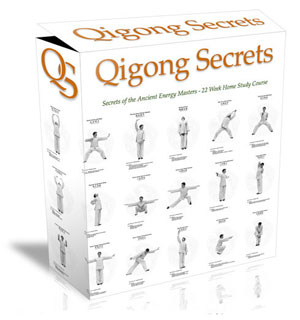
If you are researching chi kung, you will most likely have read a lot about the health benefits of doing this rather gentle practice. You will have understood that it is a combination of mental and physical exercise, but the physical aspect can seem quite mild compared to, for example, a good run, or a martial arts training session. You might have wondered just how effective chi kung is as an exercise to be added to your regime.
The answer is that there are many different forms of chi kung and some are more physically strenuous than others. The point of chi kung is not to build up cardiovascular fitness or muscular strength, though these things can happen to a degree depending on the form of chi kung being carried out. The point of chi kung is to cultivate “chi” and bring the body’s energy systems, mind and body into harmony.

Some of the different types of chi kung
There is quite a smorgasbord of schools of thought, forms and purposes of chi kung practice. The spectrum runs from exercises to heal yourself and others, to forms that are designed to increase striking power in tai chi, kung fu and other martial arts. Usually, to complete a chi kung “session”, several different things are done.

Often chi kung starts with a warm-up and limbering of the joints and muscles. There may be light tapping around the body. Then a movement could be repeated twenty times or more. In my understanding, the core of chi kung exercises is standing meditation. Usually, with a straight back, the knees slightly bent and arms in a kind of “tree-hugging” posture, this position can be held for up to an hour. That in itself is physically and mentally very challenging for the uninitiated. Breathing techniques are then applied particularly during this period.
Some methods emphasize the visualization of energy moving around the body while the exercises are being done.
To demonstrate the variety of chi kung forms that exist, here is a completely incomplete list I got from qialance:
- Ba Duan Jin: Eight Pieces of Brocade
- Ba Tian Qi Gong
- Bend the Bow Spinal Qigong
- Chan Mi Gong
- Circulation (Small or Large) a.k.a Small or Large Universe
- Daoyin Yang Sheng Gong Shi Er Fa: 12 routines from Daoyin tradition of guiding and pulling Qi
- Da Wu: choreographed exercises to lubricate joints and guide Qi
- Dayan Qi Gong: Wild Goose Qi Gong
- Dragon and Tiger Qi Gong
- Embrace Wind Caress Moon
- Emei Da Peng Gong
- Fang Song Gong: Relaxation Qi Gong
- Fan Teng Gong
- Finger Qi Gong
- Five Elements Qi Gong
- Fo Shou: Buddha Hand
- Gods Playing in the Clouds Qigong
- Guo Lin Qi Gong or Walking Qi Gong
- Huan Yuan Qigong from Feng Zhiqiang
- Hu Bu Gong: Tiger Step Gong
- Hui Gong: Exploring Wisdom Qigong
- Hu Lu Gong: Squash Qi Gong
- Huo Long Gong Qi Gong: Fire Dragon Qi Gong
- Jade Body Qi Gong
- Jiao Hua Gong: Beggar Qi Gong
- Jin Gang Gong: Diamond Qi Gong
- Lian Gong Shi Ba Fa
- Liu Zi Jue: Six Healing Sounds
- Marriage of Heaven & Earth Qigong
- Mawangdui Daoyin: Qi Gong from the Mawangdui Silk Paintings
- Nei Yang Gong
- One Thousand Hands Buddha
- Opening the Energy Gates
- Qi Dao or Tibetan Shamanic Qi Gong
- Shaolin Cosmic Qi Gong from Wong Kiew Kit
- Shaolin Nei Jing Yi Zhi Chan, also called One Finger Zen, Kong Jing, or Fire Hand of Shaolin
- Shiba Luohan Shou: 18 Luohoan Hands
- Shibashi/Taiji Qi Gong Shibashi: 18 movements
- Shi Er Duan Jin: Sitting Qi Gong
- Sight Improving Qi Gong or Tai Chi Ba Gua Qi Gong by Zhang Qiong Fang
- Sleeping Qi Gong
- Soaring Crane Qi Gong
- Spiralling Energy Body Qigong
- Spontaneous Qi Gong
- Spring Forest Qi Gong
- Swallow the Bitter Pill
- Swimming Dragon
- Sub Bak Luohan Sau
- Tai Chi Yang Sheng Zhang: a tai chi form from the stick tradition
- Wuji Qi Gong: Primordial Qi Gong
- Wu Qin Xi: Five Animals
- Xiang Gong: Aromatic or Fragrant Qi Gong
- Xi Sui Jing: Bone Marrow Cleansing
- Yangsheng Qi Gong by Jiao Gourui
- Yì Jīn Jīng: Muscle-Tendon Change Classic
- Zhan Zhuang: Standing Qi Gong
- Zhineng Qi Gong: Wisdom Healing Qi Gong
- Zhong Yuan Qigong
How do I learn chi kung?

First you should have an idea of what you want to attain with the practice of chi kung. Do you want to be able to heal others and yourself? Do you want to be more mentally calm and balanced? Do you want your martial arts practice to be more effective?
Once you have decided on the “flavour” of chi kung that appeals to you, the traditional way is to find a good teacher and attend lessons given by them. If the teacher is sufficiently advanced, this can be the best way. You would have to be quite fortunate to have such a teacher near enough to where you live. Chi kung students have been known to travel vast distances in order to learn from a good, genuine teacher. That would take a level of commitment and lifestyle change that is simply not possible for everyone to do.
Another way is to learn from books. This is the same as studying any subject. You would need a high level of self-motivation to consistently practice the exercises that you read about. You would have no-one to provide feedback as to whether your form is correct or not. The answers to any questions you might have are limited to the pages of your book, and your own experience. It is a difficult path to take, but certainly possible.
In the modern age, we have audio and video as well as the written word as a study medium. This provides the closest experience to having a sifu (teacher) present in the room with you, without him or her actually being there.
One such course I can recommend is Chi Power (click on the link). I have learned a lot from this and pushed my knowledge of chi kung forward. It is a very practical course with enough of the theory to let you know why certain exercises and routines work the way they do.
Some of the benefits of chi kung
A good balance of chi kung exercises actually has multiple benefits. It’s also possible to focus on a particular issue in the body (e.g. the heart or liver) and do routines that bring health and vitality to those areas only. Here’s a brief list of some of what chi kung can do for you:
- Calms the mind and reduces stress.
- Bolsters the nervous system.
- Improves the functioning of the internal organs.
- Improves circulation.
- Tones and rejuvenates the heart muscle.
- Increases dynamic power.
- Relieves tightness in muscles.
- Supports the immune system.
- Helps with any healing process.
- Increases endurance.
This list doesn’t even go into some of the more esoteric sides of this practice, but that is a discussion for another time perhaps.
There is so much to learn in chi kung. That is why I suggest having an idea of which direction you want to start with when learning. That way you will avoid taking a path that you didn’t really want to go down in the first place.
Best wishes in all your endeavours.